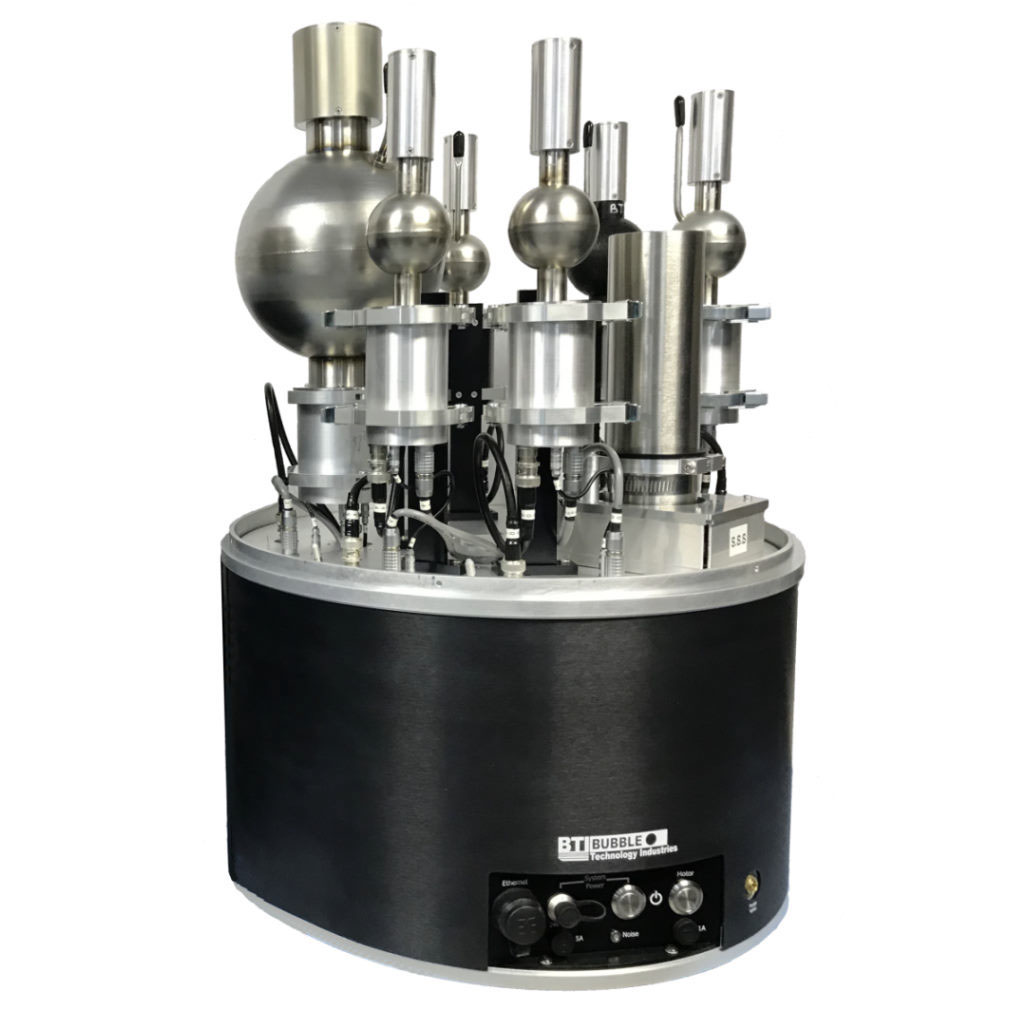ROSPEC-2 is a user friendly, unique rotating neutron spectrometer designed specifically for the spectral measurement of degraded fission neutrons, which may be encountered in nuclear power and fuel processing plants, weapons-related military facilities and accelerator laboratories. Introduced in 1992, ROSPEC-2 has a proven operational record with a program of continued performance upgrades.
ROSPEC-2 is intended for use by non-specialists for the characterization of neutron fields that pose a health threat. It will generate very accurate spectral and dosimetric data simply and routinely in minutes or hours, in contrast to previous methods that could take weeks or months of a specialist’s time.
Data analysis is via a laptop computer, with on-line display of individual or all counter pulse height distributions, and an unfolding program for generation of neutron spectra. Kerma, maximum dose equivalent and ambient dose equivalent H*(10) and dose rate are calculated, and data storage is to hard disk. The rotating platform carries all detectors and electronics. Individual counters are removable for use in confined spaces (one 8 meter umbilical cable is supplied).
- Generates spectral data simply and routinely in minutes/hours
- Calculates dose (fluence) and dose rate in kerma, maximum dose equivalent (NCRP) and the ambient dose equivalent (H*(10)), from thermal to 4.5 MeV
- On line display of individual/all counter pulse height distributions
- Turn-key system includes counters, associated electronics, cabling, laptop, UPS battery backup and all software
- Specified in NATO operational manual for military alliance research
- Units are at work in Defence Departments in Canada, Germany, France and the USA, at US DOE sites, major fuel fabricator/reprocessors in Europe and Japan and standards labs (NIST, JAERI, CEA) around the world.
In addition to providing an in-house calibration of the ROSPEC using reference standards that are traceable to the SI through the National Research Council of Canada (NRC) or the National Institute of Standards and Technology (NIST), BTI can offer a calibration of the ROSPEC at NIST.
The NIST calibration involves the use of bare and D2O moderated Cf neutron fields (fast neutron). A short report indicating that the ROSPEC measured the dose within a certain percentage and a comparison of spectra is provided.
The Simple Scintillation Spectrometer (SSS) is a neutron spectrometer intended to complement the spectral range of ROSPEC-2, allowing measurements from 4 to 16 MeV. The SSS detector is an array of small plastic scintillators coupled to a photomultiplier tube. The dimensions of these scintillators are selected to optimize the neutron response functions of the detector while at the same time minimizing the sensitivity to gamma radiation.
The SSS consists of the neutron detector, a photomultiplier, a high voltage supply, and an analyser module similar to the ones used for the gas counters.
Like ROSPEC-2, the SSS produces raw data which is, to a first approximation, the integral of the neutron spectrum. This data is input to the standard ROSPEC-2 program to generate accurate neutron spectra and dosimetry up to 16 MeV.
